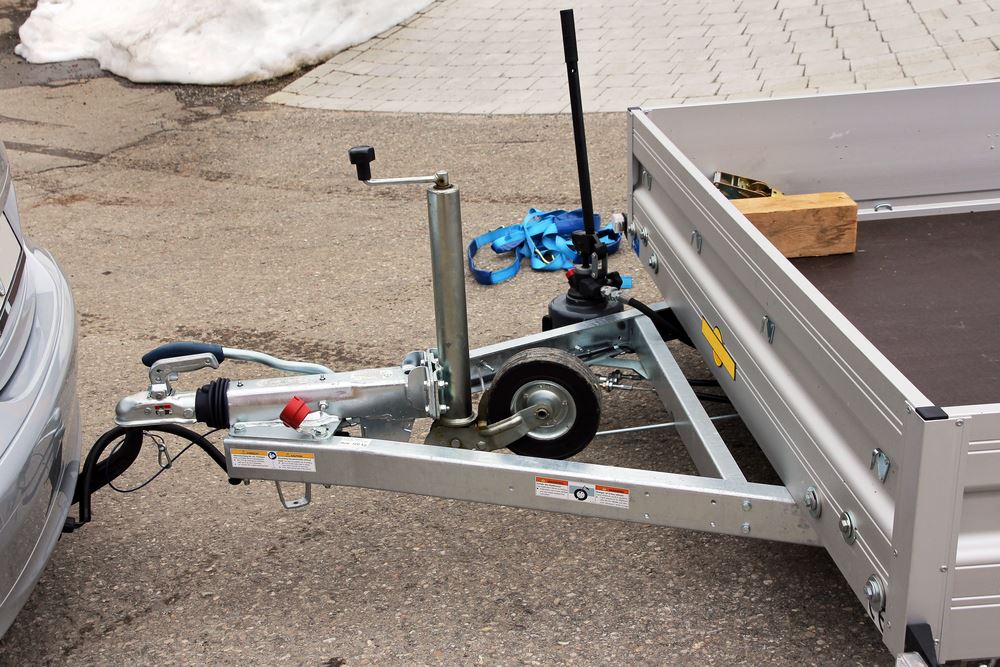
Staying safe on the road can be challenging at the best of times, but adding a trailer behind your car adds a few extra risks to your driving. This trailer-towing safety checklist covers some of the essential checks and equipment you need to travel safely with a trailer.
1. Inspect the Trailer Tyres
Trailers often stay rooted to the same spot much longer than most vehicles do. This leaves their tyres susceptible to flat spots or the rubber becoming hard (you will usually notice small cracks on the sidewalls if this has occurred). You need to inspect the condition of the tyres any time you take your trailer on the road – and this includes checking their air pressure.
2. Check the Brakes
So at what stage does your tow rig need brakes? This is entirely dependant on weight. Is your trailer going to need brakes installed and how heavy should you go? First things first, if you already have trailer breaks installed, inspect the brakes for any wear and tear. Here is the important stuff: for towing a trailer weighing 750kg or less - which is only the weight on the trailer wheels, not including the towball weight - when talking about the GTM (Gross trailer mass) you don't legally require brakes here. For anything over 750kg - 2000kg (GTM), you must have trailer brakes by law. You can choose from quite a few such as an override mechanical brake system or an override hydraulic brake system. If you go for an electric or electric/hydraulic braking system, you'll need an electric brake controller fitted in your tow vehicle for the brakes to work. If your trailer uses hydraulic brakes, also check that the fluid level is suitable. To give yourself more control while towing a trailer, you may want to invest in a remote electric brake system you can control from the driver’s seat.
IMPORTANT: Always test your brake system with your FULL load (including a full watertank) before embarking on a trip. Stick to around the 40km speed and see how the electronic brake system feels. Adjust the controls from inside the vehicle depending on the feel of your tow vehicle. The trailer wheels may lock up if you have it adjusted to high and you may feel the tow vehicle being sluggish when stopping, meaning the break system needs to be set to higher resistance.
3. Upgrade Your Side Mirrors
It’s important that you can always clearly see your trailer while towing it. Caravan towing mirrors can help you achieve this, or you might prefer to install a rear-view camera. If your load is wider than your towing vehicle it is required that you install towing mirrors. Outback Equipment has a huge range to suit all needs including the very popular MSA towing mirrors that can be adjusted to retract to a normal factory setting when not in use. If you are budget concious our Tuff Terrain towing mirrors will absolutely do the trick for travellers who tow consistantly and ofcourse there are clip-on towing mirrors for the occasional trip.
4. Ensure All the Connections Are Working and Secure
It’s essential to ensure your trailer’s physical hitching to your car is completely secure. You need to make sure all the components are there (coupling, pin/lock, trailer ball, ball mount, and safety chains) are in working order and appropriately lubricated. By getting yourself a high quality Trail-A-Mate Jack & Jockey Wheel, you can easily save time and effort when it comes to hitching a caravan or trailer to a towing vehicle. A high quality jockey wheel that doubles as a jack is the ultimate luxury in caravanning. Simply unhook your Trail-A-Mate jockey wheel and replace with a steel base plate to get your caravan at the right level when hooking on. Trail-A-Mate jack and jockey wheel will come with plenty of accessories to keep these jockeys wheel safe and in working order for years to come.
You also need to make sure the electrical connections are operating correctly. For example, when you hit your car brakes, do the trailer’s brake lights come on? What about when you indicate? Especially after a long time of not using your trailer, it’s important to double check that all the lights light up when they should. If any of the electrical connections aren’t holding up, make sure to upgrade the plugs and sockets as needed.
5. Have Some Spares on Hand
When going for a long trek with your trailer, it’s a good idea to have these spare components on standby as a minimum:
-
Spare Tyre
-
Wheel hub
-
Set of bearings
If you’ve noticed any other components are getting close to needing replacement, make sure to have the relevant backup pieces on board too. You can find plenty of repair kits and replacement kits for many of the popular towing devices such as the Do35/45 coupling and the Trail-A-Mate jack and jockey wheel on our website.
6. Check the Hubs, Bearings and Axles
Jack each wheel off the ground to do a thorough inspection. By spinning and attempting to wobble each wheel, you can check for any signs that the bearings might need to be tightened or replaced (wobbling movement means tightening is required; a rumbling noise when spinning suggests they need replacement). During this inspection, also make sure that the axle is straight, square, and sitting right on the spring’s centre pin.
7. Inspect the Body for Rust or Cracks
Sitting outside for long stretches can lead to serious rust problems or even cracks in the joints of your trailer’s chassis. When inspecting the tyres, wheels and connection points, don’t overlook the body itself – including the underside, where rust can develop unnoticed. With this trailer-towing safety checklist under your belt, you should be able to hit the road with confidence that your trailer is in good condition and ready for the journey ahead. For tips on reversing with your trailer, be sure to read this article.
8. Loading The Trailer
Load 70% of the weight over the axles and at the front to avoid too much weight in the back. Invest in some quality ratchet straps to ensure the load stays at the front on the trailer. This will prevent what grey nomads call the 'death wobble' where the trailer will start to sway from side to side at high speeds. Overloading the back will also leave your towball and coupling loose and prone to damage as it does not have enough weight over the towball to astablish a secure connection. It is the same with overloading the front end as well, which can lead to dangerous driving and a floating effect on the front wheels. Pick yourself up a towball weight scale and a Reich weight scale to get a precision measurement on every wheel and coupling.


.png)